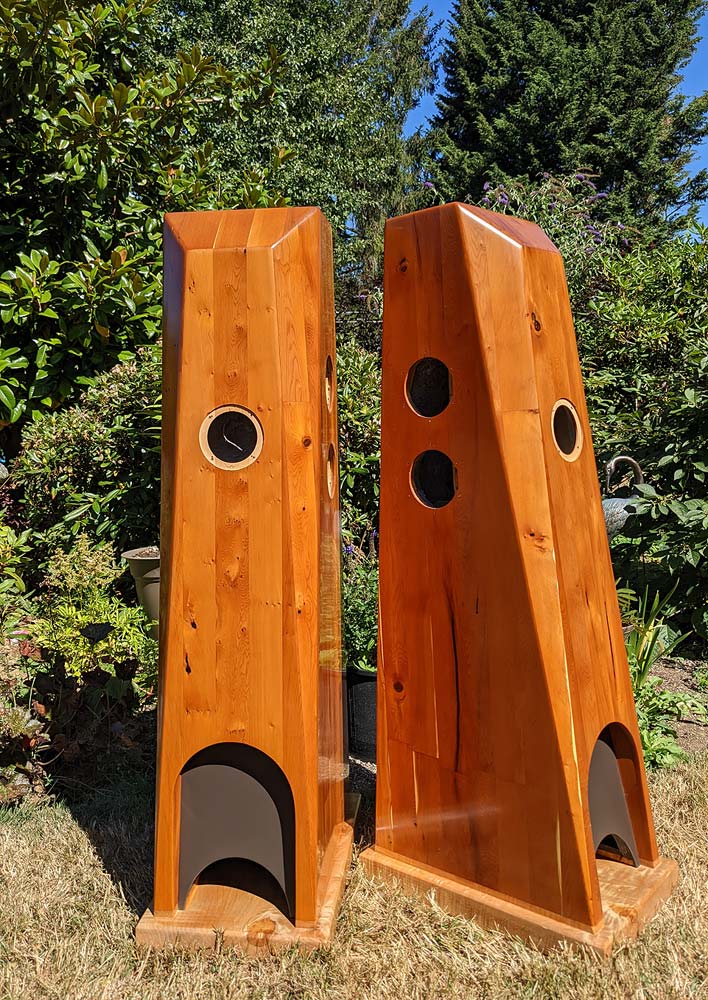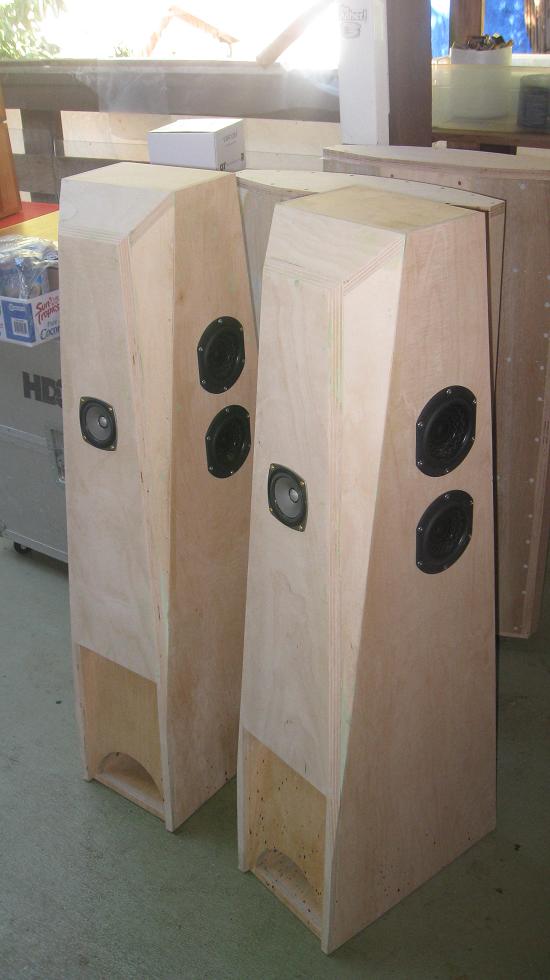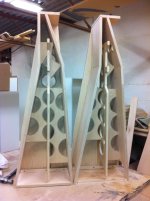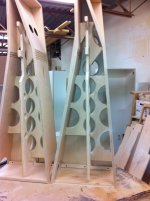I am building bookshelf full-range speakers and I have these beautiful wood sheets that I want to use, however, the sheets are very thin like 6.2mm or 0.24 inches (1/4). Also, I want to use these sheets because I can work very easily with my desktop CNC Snapmaker. The sheets are very solid and stiff. Nothing bendy.
The problem is that I don't know if this will affect the sound and how it would be affected, do you have any idea?
I am not looking for a flat response and I don't mind enclosure resonance, in fact, I like the sound of those speakers with some baffle resonance.
Anyway, how would you say the thickness changes the sound?
Thanks.

The problem is that I don't know if this will affect the sound and how it would be affected, do you have any idea?
I am not looking for a flat response and I don't mind enclosure resonance, in fact, I like the sound of those speakers with some baffle resonance.
Anyway, how would you say the thickness changes the sound?
Thanks.
it makes it thicker...?
sorry likely not the sort of response your looking for.
you've got the material so, what the hey, i would build an enclosure using the same procedure as any other good design, proper size,sufficient bracing, and driver mounting (which is where using thin material can be problematic).
with your material thickness should it turn out too lively vis a vis resonance it's a chance to experiment with CLD (constrained layer damping) a couple a tubes of green glue and your home free...
sorry likely not the sort of response your looking for.
you've got the material so, what the hey, i would build an enclosure using the same procedure as any other good design, proper size,sufficient bracing, and driver mounting (which is where using thin material can be problematic).
with your material thickness should it turn out too lively vis a vis resonance it's a chance to experiment with CLD (constrained layer damping) a couple a tubes of green glue and your home free...
Gorgeous timber. You know it can be easier to get thinner materials to stop vibrating than thicker ones? Natural wood will also need stabilising against the elements too to prevent twisting and splitting. You may be able to achieve both by sheathing it between two layers of light double bias glass and epoxy. The finish will go clear and can be sanded and polyurethane applied. The glass faces will create a composite sandwich and make each panel massively stiffer then bare
It's all about learning so ... You don't mention what size speaker you intend to use so it could work. There have been a lot of foam core cabinets made on here. One speaker I build was a homage to the LS 3/5 that used 9mm panels with battens and a 12mm baffle. That speaker works very well. Uses a 5.25 inch woofer.
This is not so simple to definitively answer. Yes, the sound is effected by the enclosure, design, materials and construction, all. The concerns here are 1) the resonant frequency and Q (ringing decay) of the finished structure, and 2) that the structure does not flex enough to undesirably modulate the enclosure/driver loading parameters, or to act as a passive radiator itself. There are too many interrelated factors try and communicate here. Suffice to say that a thin walled (low mass) structure can serve very well (some would say, serve ideally), so long as it also is well braced internally, in other words, is very rigid.
The sheets are very solid and stiff. Nothing bendy.
Stiffness is the key, so small (high SQ) speakers are often metal boxes, ergo if the wood is stiff enough (high MOE) it will counteract the wood's damping properties for a ~neutral sound, otherwise it will be a bit over damped if not braced (enough).
I've used cheap ply about the same thickness for my packing case speakers, and they sound quite good. I think Splendor use thin wood, heavily damped. You could always get a thin cork mat and use contact adhesive to glue it between two pieces of your thin wood, combining stiffness (at least more than one sheet) and damping. On my current project, I've used thin MDF with carpet tile glued to the inside with felt in-between, but I'll have to see how well this works.
Let’s not forget that those bad boys had a fair amount of internal bracing, and IIRC the added mass of the Yew layer caused the lower of frequency - and even Q? - of panel resonances that required some additional fiddling to mitigate.
The biggest issue I could foresee with solids or plywood this thin would be adequate glue surface area at joints, so at the least some minor battens should be considered. I think the thinnest material we ever experimented with on our small FR driver builds was 1/2”.
The biggest issue I could foresee with solids or plywood this thin would be adequate glue surface area at joints, so at the least some minor battens should be considered. I think the thinnest material we ever experimented with on our small FR driver builds was 1/2”.
IIRC the added mass of the Yew layer caused the lower of frequency - and even Q? - of panel resonances that required some additional fiddling to mitigate.
Yes, they went from good to yuck. An additional brace was added in the midTL.
Chris, you posted a picture of the insides i had not seen before, thot i grabbed it, but cannot find it, can you post it again?
dave
Then why not go all the way with this sentiment and design them to start off sounding a bit flimsy, to be corrected to taste later?I am not looking for a flat response and I don't mind enclosure resonance, in fact, I like the sound of those speakers with some baffle resonance.
I think the best is just to build it and try it cause as you said, lots of variables into play.This is not so simple to definitively answer. Yes, the sound is effected by the enclosure, design, materials and construction, all. The concerns here are 1) the resonant frequency and Q (ringing decay) of the finished structure, and 2) that the structure does not flex enough to undesirably modulate the enclosure/driver loading parameters, or to act as a passive radiator itself. There are too many interrelated factors try and communicate here. Suffice to say that a thin walled (low mass) structure can serve very well (some would say, serve ideally), so long as it also is well braced internally, in other words, is very rigid.
Build them like an acoustic guitar is internally then. Fan bracing, lattice bracing, X bracing, tapered braces, those "kerfed" linings that attach the top and back to the sides. Stick with a light but strong theme and see how they sound - to you. What if no one's ever done it because "no one in their right mind would do it that way", but never the less, there's a gem to be found there? The wood thickness is your excuse to try.and I don't mind enclosure resonance,
Try theseYes, they went from good to yuck. An additional brace was added in the midTL.
Chris, you posted a picture of the insides i had not seen before, thot i grabbed it, but cannot find it, can you post it again?
dave
Attachments
- Home
- Loudspeakers
- Full Range
- Does the sheet thickness for the enclosure matters?



